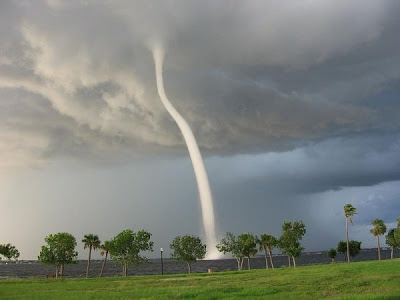Severe convective storm, thunderstorm and severe weather impacts reached a record high last year, as the peril drove the largest share of annual natural disaster losses that were covered by insurance and reinsurance in the United States during 2020, according to data from Munich Re.
 The convective storm peril, which includes severe convective weather, thunderstorms, tornadoes and hail, as well as related impacts from straight-line winds that these weather conditions cause, has been a growing contributor to natural disaster losses for the insurance and reinsurance industry in recent years.
The convective storm peril, which includes severe convective weather, thunderstorms, tornadoes and hail, as well as related impacts from straight-line winds that these weather conditions cause, has been a growing contributor to natural disaster losses for the insurance and reinsurance industry in recent years.
2020 saw convective weather losses reach a record level in the United States, according to Munich Re’s data, with $40 billion of economic losses experienced and around $30 billion of these were insured.
In total, the convective storm peril therefore drove 45% of total U.S. insured natural disaster losses in 2020, with the hurricane season contributing $26 billion and wildfires $11 billion, for a total of $67 billion for the year.
Once again, the United States was the source of the majority of insurance and reinsurance market losses from natural disasters in 2020, according to reinsurer Munich Re’s new report.
Out of the total $82 billion of natural disaster losses the insurance and reinsurance industry paid for in 2020, some $67 billion emanated from disaster events affecting the United States.
As is typically the case, overall some 70% of the United States disaster losses were insured in 2020, with the country exhibiting some of the smallest protection gaps, as insurance penetration remains higher there.
It differed somewhat across perils though, as only 60% of hurricane losses and 68% of wildfire losses were covered by insurance, compared to 75% of convective storm losses.
The convective storm and severe convective weather related perils are therefore increasingly important for the insurance, reinsurance and insurance-linked securities (ILS) industry.
Not least as a significant driver of losses, but as one that is largely covered by insurance, with its costs definitely influenced by economic activity levels and also its prevalence and frequency thought to increasingly be influenced by climate change related factors.
Of all the natural disaster losses facing the United States in 2020, hurricane Laura drove the highest insured loss at an estimated $10 billion.
The record setting 2020 hurricane season, which as we explained back in November was characterised by storm frequency and rapid intensification, also saw $4.1 billion of insured losses from hurricane Isaias and $3.5 billion from hurricane Sally, by Munich Re’s reckoning.
Wildfire activity also drove significant losses, with a $16 billion economic loss from western U.S. wildfire activity during the year, driving $11 billion of insurance and reinsurance market impact, Munich Re said.
In California alone, wildfires between August and November have driven insured losses of $7.5 billion, according to the reinsurer.
But convective weather and severe thunderstorms remain the major contributor to annual catastrophe losses in the United States for 2020, led by the midwest Derecho event in August that drive $6.8 billion of losses and a $5 billion loss for insurers.
It was a “highly active loss year” year for convective storm related activity, in fact Munich Re told us that losses reached a record high in 2020, with $40 billion of economic losses translating to $30 billion covered by insurance and reinsurance, a considerable increase on 2019’s $20 billion of convective storm insured losses.
The convective storm and severe weather peril has become a significant cause of aggregate reinsurance deductible erosion in recent years, as well as a driver of direct losses.
Interestingly, as recently as early 2016, the industry’s average annual losses from convective storms were pegged at between $10 billion to $15 billion at most, but the last few years has seen the total rise much higher.
Scientific research suggests that convective storm activity in the U.S. tends to be higher during or following a La Nina period, which might suggest heightened storm activity for 2021 through the tornado season is a possibility.
Also read: “Time to act” as climate role in disaster losses increases: Jeworrek, Munich Re.
 View all of our Artemis Live video interviews and subscribe to our podcast.
View all of our Artemis Live video interviews and subscribe to our podcast.
All of our Artemis Live insurance-linked securities (ILS), catastrophe bonds and reinsurance video content and video interviews can be accessed online.
Our Artemis Live podcast can be subscribed to using the typical podcast services providers, including Apple, Google, Spotify and more.































